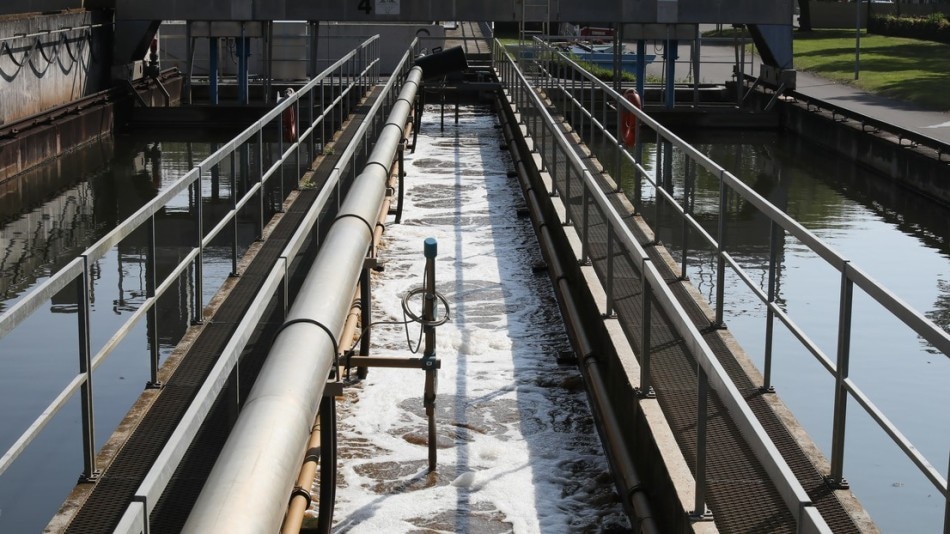May 14 2019
EPFL spin-off TreaTech has created a system that can convert sludge from wastewater treatment plants into biogas and mineral salts, which, for instance, could be used in fertilizer.
 Image credit: EPFL
Image credit: EPFL
The company’s work is being funded by many public- and private-sector entities and a large-scale pilot plant is currently being developed. The system is planned to be set up at a wastewater treatment plant by 2022.
Wastewater treatment plants generate an effluent generally called sludge. Earlier, plant operators discarded this sludge directly as fertilizer; however, that was made illegal in Switzerland a little more than a decade ago because of the increasing concentration of pollutants present in effluents. Consequently, the sludge is generally dried into cakes and burned, taking thousands of tons of phosphorus with it annually. That is of importance since phosphorus is an important compound in many biological processes, such as photosynthesis; however, so far, there was no viable technique for recycling the phosphorus in effluent streams.
Engineers at EPFL’s Laboratory of Sustainable and Catalytic Processing have developed a system that can recover the phosphorus, the market for which is calculated to be CHF 33 billion. The system was created by TreaTech, a company spun off from the lab. TreaTech’s system is also able to yield biogas from the effluent due to technology, known as thermal gasification, created at the Paul Scherrer Institute.
To minimize transportation costs, the sludge that includes 95% water is first dehydrated by wastewater plants, demanding a lot of energy in-turn that has a cost of its own. The residue is subsequently incinerated in some other place.
Our system can recover sludge directly from wastewater treatment plants without any drying or other preliminary processing needed.
Frédéric Juillard, CEO, TreaTech
In his system, the effluent stream is made to pass through a high-pressure, high-temperature separator (>22.1 MPa and 400 °C) where the fluid reaches a supercritical condition (i.e., between liquid and gas). That acutely decreases the solubility of the phosphorus and mineral salts in the fluid, making them crystallize into solids that can be easily recovered. “Over 90% of phosphorous can be recuperated,” emphasizes the CEO.
Converting Nearly 100% of Organic Matter into Biogas
Some wastewater treatment plants already comprise of systems for converting sludge into biogas.
But biodigesters they currently use can convert only 40–50% of the organic matter.
Gaël Peng, Co-Founder and CTO, TreaTech
The residual digestate is dried and shifted to incineration facilities. That results in considerable costs and needs a great deal of energy. “Sludge processing and disposal account for around 40% of a wastewater treatment plant’s total operating costs,” continues Peng. Thus, Juillard wanted to integrate technology for producing biogas into his system, so as to help plant operators decrease costs and promote conversion rates.
He spent quite a few months investigating various technologies being designed worldwide; however, he found the solution less than 200 km from EPFL, at the Paul Scherrer Institute. Researchers were working on a new type of reactor that employs ruthenium as the catalyst and that can realize almost 100% conversion rate into biogas that can be used to generate electricity or heat, or even as biofuel. The resultant water is free from toxicity and can be pumped directly back into municipal water systems.
Furthermore, the technology developed by researchers also saves a substantial amount of time as their reactors can convert sludge into biogas within 20 minutes, whereas traditional biodigesters require about 30 days. Additionally, it saves space at wastewater treatment plants without leaving any waste.
Large-Scale Testing
TreaTech’s work is being supported by the Paul Scherrer Institute and also the Swiss Federal Office of Energy. The firm has succeeded in testing a prototype and is currently constructing a large-scale version. It intends to set up its system at a wastewater treatment plant in 2022—just in time to help plant operators meet new phosphorus recycling regulations that could be effective in Switzerland by 2026. By asking the firms to recycle phosphorus, the Swiss government expects to eliminate the costs and environmental risks of importing the chemical.
As TreaTech has now successfully tested its prototype, it is constructing a pilot plant that is 100 times bigger and can process100 kg/hour of sludge. The company’s work is being supported by the Swiss Federal Office of Energy and obtained CHF 4.4 million in funding from a public-private partnership. The pilot plant should be accomplished by the end of the year, and the system is planned to be installed at a wastewater treatment plant in 2022, with the potential to treat 3 metric tons of sludge per hour.
The next step will be to customize the system so that it could be used in other applications like for treating industrial wastewater, biomass residue, or wastewater from desalination plants.
Turning wastewater sludge into energy and mineral salts
Video credit: EPFL